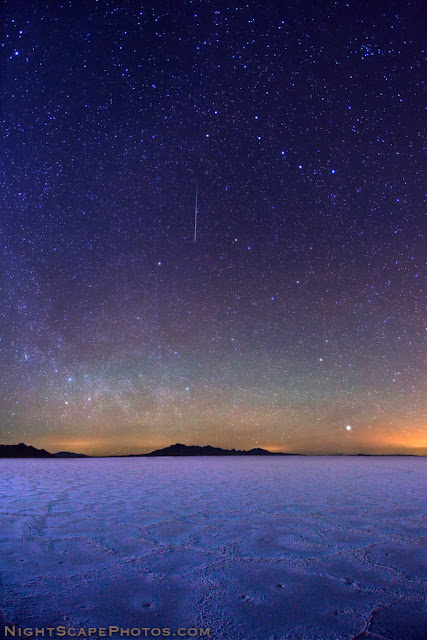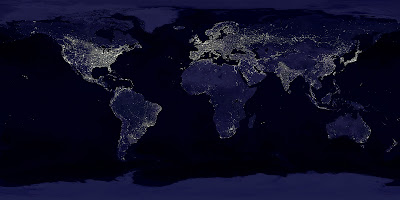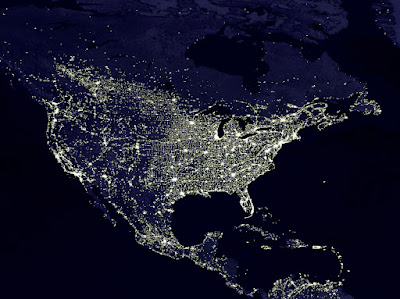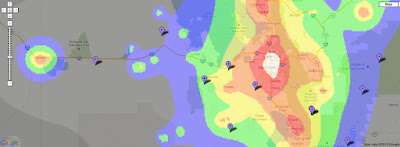 |
| Delicate Arch by Florian Schultz ~ taken with the Nikon D600 @ ISO 3200 |
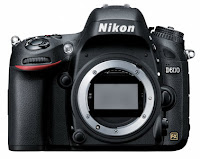 |
| Nikon D600 |
 |
| Canon EOS 6D |
Nikon D600 Sensor is Comparable to the D800: The Nikon D600 has a new 24.3-megapixel FX-format CMOS sensor. Nikon says the camera's 14-bit A/D conversion and excellent signal-to-noise ratio enable it to produce images with low noise and wide dynamic range even at high ISO sensitivities. The D600 offers an ISO range of 100–6400, extendable up to 25,600. Recent tests by DXO Labs rate the Nikon D600's sensor higher than the Nikon D3X, Nikon D4, Canon EOS 5D Mark III, and only slightly less than the Nikon D800! It will be interesting to see how well the Canon EOS 6D performs in these same tests after its release in December. (I agree with DxO's conclusion about the D600's sensor performing just slightly below the D800, but I'm not sure I agree that both sensors perform better than the Canon 5D Mark III. This leads me to the belief that the Canon 6D sensor may actually perform better than the Nikon D600 when all the tests are in (see below)).
 | |
| This shows cropped detail of the top photo (click for an enlargement at 100%) |
Nikon D600 VIDEO: Photographer, Florian Schultz, and his brother, share their experiences of testing the new Nikon D600 in a video called, "Chasing the Light" --shot entirely with the D600. Be sure to also see, "The Making of Chasing the Light" --two brothers on a road trip, in an old pick-up truck! (I was intrigued to learn that the D600 has a built-in intervalometer, and also has the ability to preview time lapse shots as a video sequence!)
Nikon D600 Preview: For the best hands-on preview go to this Digital Photograpy Review.
Canon EOS 6D Preview: Because the 6D will not be released until December, there is little information available about it at the moment. For the best hands-on preview of the Canon EOS 6D, with key specs compared to the Canon EOS 5D Mark III and Nikon D600, go to this Digital Photograpy Review.
Lens Compatibility: If you are currently using a Canon camera with an APS-C size sensor and LF-S lenses, you'll also have to upgrade to LF lenses, since the LF-S lenses do not provide full-frame sensor coverage. However, the Nikon D600 FX-format camera does offers support for the complete DX NIKKOR lens lineup (with DX lenses, the camera automatically switches to a 10.5MP DX-format crop mode). One must use FX NIKKOR lenses to take advantage of the camera's full 24.3-million pixels.
My Opinion: Overall, there are several specification on the Nikon side that out-weigh the Canon specs. However, this blog is about night photography and the benefits of low noise at high ISO's. I think either camera is going to be a smash hit for photographers wanting the higher dynamic range and lower noise of a full-frame sensor. Although the Nikon is the first entry-level full-frame camera out of the gate and with a lot of hype, I think time may show that the image quality of the Canon EOS 6D to be superior at higher ISO's. There are at least two factors that lead me to this belief:
Number One: The default standard ISO range on the Nikon D600 is 100 to 6400, whereas the Canon EOS 6D has a standard ISO range of 100 to 25600, which is two stops greater. This would indicate that the Canon has superior noise control and a higher real life dynamic range.
Number Two: Tests from other sources lead me to believe that the DxOMark Sensor Scores may not be totally reliable (as several others have commented on the DxO website). For instance, they give an overall sensor score of 94 to the Nikon D600, just one point below the Nikon D800's score of 95; and they give the Canon EOS 5D Mark III a dismal score of 81, just two points above the older Mark II's score of 79.
 |
| Test pattern at Digital Photography Review (I choose the "BA" area from the bottle of Baileys liquor) |
 |
| Choose any 3 cameras you want to compare. I chose these and an ISO of 6400 (top left is the ISO 100 control) |
CAMERA FILE PIXEL SIZE UNCOMPRESSED / COMPRESSED COMPRESSION RATIO
Canon 5D Mk3 file: 5760 x 3840 pixels = 63.28MB / 8.4MB JPEG = 7.53:1 compression
Nikon D800 file: 7360 x 4912 pixels = 103.43MB / 18.8MB JPEG = 5.50:1 compression
Nikon D600 file: 6016 x 4016 pixels = 69.12MB / 14.5MB JPEG = 4.77:1 compression












